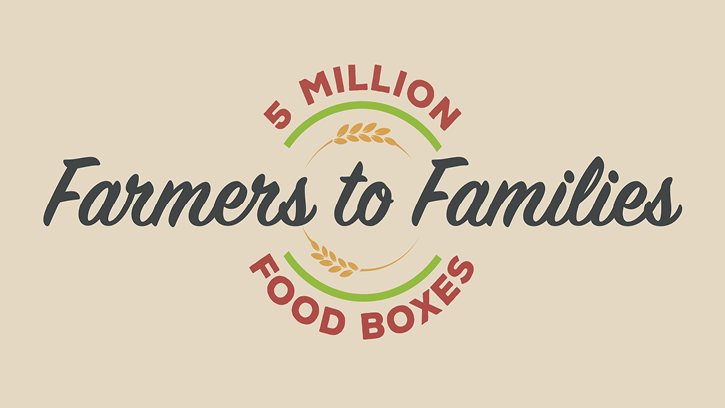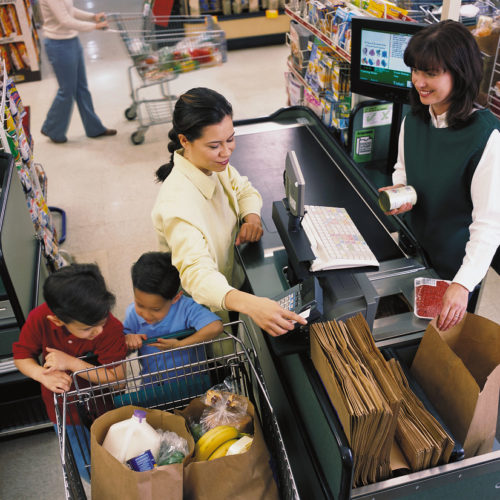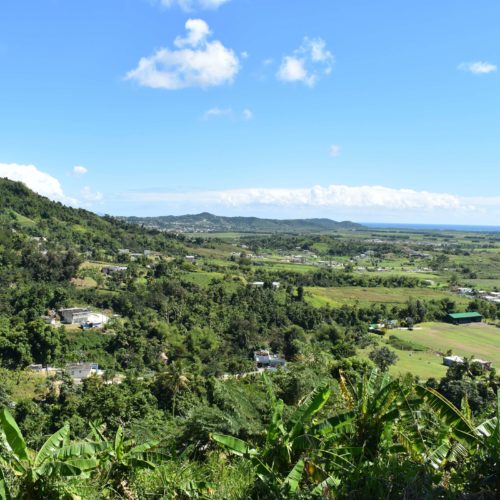Farmers to Families Food Box Program
Success, failure, or both?
The U.S. Department of Agriculture (USDA) recently announced a fifth round of funding for the Farmers to Families Food Box Program (FFBP) created in April 2020 as part of a $19 billion program to help farmers and consumers during the coronavirus pandemic. The funding level for the latest round is $1.5 billion.

The program has been a lifeline to farmers in the Northeast whose markets were disrupted by the virus, as well as to millions of consumers who lost their jobs amid the pandemic and lined up at local food pantries.
Nevertheless, there have been challenges with distribution networks and criticism that the program did not rely enough on local providers.
CSG East staff interviewed CEOs and food bank directors in six states to assess the strengths and weaknesses of the program, and their level of satisfaction with the outcome thus far.
The Farmers to Food Box Program
On April 17, 2020, USDA Secretary Sonny Perdue announced the Coronavirus Food Assistance Program (CFAP) to help farmers and consumers during the pandemic. The initial CFAP funding was $19 billion to support farmers whose markets were disrupted by the virus, to secure the integrity of the food supply chain, and to ensure food security for every American. The Farmers Food Box Program was created with CFAP funding.
In FFBP Phase 1 (May 15 through June 30), $16 billion was provided as direct support to farmers, based on their actual losses due to the impacts of the virus. It also provided $3 billion to purchase produce, dair, and meat to be distributed to those in need at the rate of $300 million per month. Distributors and wholesalers prepared and distributed more than 35.5 million pre-approved boxes of product “to food banks, community and faith-based organizations, and other non-profits serving Americans in need.” (click here for AMS site)
In FFBP Phase 2 (July 1 through September 18), an additional $873.3 million was made available to Section 32 funding, the section of the Agricultural Adjustment Act of 1935 that authorizes the USDA to support prices of commodities in surplus by purchasing them in the marketplace; it also authorizes USDA to distribute commodities domestically. The program purchased $1.763 billion in food through extended contracts with select vendors from the first round of the program.
In FFBP Phase 3 (August 24 through October 31), President Donald Trump announced on August 26 an additional $1 billion extension to the program, bringing the total allocated amount to $4 billion. During the announcement in North Carolina, the president said that more than 1 billion pounds of food had been delivered, providing 100 million meals to Americans in need. As of September 28, there have been 78,862 food boxes invoiced.
In FFBP Phase 4, Secretary Perdue announced an additional $500 million in food distribution from November 1 to December 31, 2020.
A new FFBR Phase 5 was announced on January 4 by former Agriculture Secretary Sonny Perdue. The amount of this fifth phase of the food assistance program is $1.5 billion, with contract awards expected to have started January 19, 2021.
In total, USDA has distributed more than 132 million food boxes in support of American farmers and families affected by the COVID-19 pandemic.
Contracts to distributors and producers in the CSG East region
During the first two phases of the Farmers to Families Food Box Program, 45 contracts were awarded to food producers, processors and/or wholesalers in the 11 northeastern states, with contracts ranging from $61,600 to $10,043,500. However, during Phase 3 of the program, the number of contracts awarded in the region was reduced from 45 to only 10, and five states in the region had no contracts awarded at all.
The majority of the cancelled contracts in Phase 3 had been intended for smaller, local entities who could source locally from struggling small farmers in the same area where the food was to be distributed. In many cases, contracts were awarded to large companies, sometimes far from the ultimate delivery location, potentially compromising freshness and the safety of the product.
Maine
Kristen Miale, president of the Good Shepherd Food Bank of Auburn, Maine, believes that the food bank’s clients, partners, and local famers would have been better served had the USDA given the money that was awarded to the contractors directly to the food banks. The contractors are those farmers, distributors, processors, or other food service entities that have received a government contract to fulfill the food box program requirements for a region. Food banks have systems in place and the knowledge of where to get the most for their dollars.
In Phase 3, no contracts were awarded in Maine. Food banks in the state began getting their boxes of product from Vincent Farms in Delaware.
The food bank typically uses their dollars to purchase as much product from local companies, such as Native Maine or Maine Farmers Exchange. In July, they distributed 4,500 boxes of food a week.
“The new mandate from USDA in the third round was that all products must be packed in one box, which makes it heavier to lift and difficult to refrigerate correctly. The temperature required to keep the milk fresh can quickly spoil the fresh vegetables,” said Miale.
There was a spike in need at the in the early months of the pandemic — a 25 percent increase over the prior year. Since then it has stabilized somewhat, but Miale says that Good Shepherd still plans for a 40 percent increase in need for the remainder of 2020. Miale is grateful that financial donations are up considerably.
Maryland
Rich Congdon, senior vice president of operations at the Maryland Foodbank, said, “The food box program has been a windfall for us.” The amount of food that was distributed has doubled since last year, from 15.9 million pounds from March through August of 2019 to 31.4 million pounds during the same period in 2020. He added that “the quality of the product, including produce, is very good. Usually we have to go to the secondary market to buy our produce, but this has all been primary market quality.”
However, Phase 3 of the program, which expired October 31, had been more limiting than the first two phases that permitted the food bank to choose which products that they received. Congdon said that in Phase 3, all products were in the same box and the food banks and distribution centers had no say about which products what they would receive.
There were distribution problems during the roll out of Phase 3, resulting in a week’s gap in box delivery. In addition, Congdon said that the Maryland Foodbank received fewer boxes in this third phase -– down from 17,000 per week in the first two phases to 14,000 per week.
Their previous vendor, Coastal Sunbelt Foods, was a local distributor. Now the vendor is Vincent Farms out of Delaware, not Maryland. Sysco Corporation, a large multinational food distribution with more than 69,000 employees, appeared in this third phase for the first time, and was awarded a contract for 17,088 cases for the six-week period of the third phase.
The food bank has been holding distribution events called “Pantry on the Go.” They distribute the Coronavirus Food Assistance Program (CFAP) boxes and add a supplemental food box that can feed a family of four for a week. These supplemental boxes contain non-perishable shelf-stable foods. Most of Maryland’s food shelves are open during the pandemic, with only 15 percent closed.
Congdon thinks that ultimately the food box program has been a success. It helps farmers and ranchers who had lost their markets during the supply chain disruption and it helps to feed people in need. As an example of the increase in need, in 2019 the Maryland Food Bank spent $2.7 million on food, and in 2020 it will jump to $13.7 million.
New Hampshire
Eileen Liponis, executive director of the New Hampshire Foodbank, explained that the first two phases of the CFAP program supplied four different boxes per order -– containing milk, dairy (cheese), meat, and produce. The third phase combined in one box all four products, which are not all locally sourced. The food bank hired a trucking company to do the last leg of the distribution. The problems with the one box versus four boxes include added weight per box, cross contamination, and a necessary level of refrigeration for all box contents.
The foodbank has 215 partners: afterschool programs, senior centers, food shelves, and church-based charities. New Hampshire took advantage of the assistance provided by the Federal Emergency Management Association (FEMA) to have National Guard members assist in the food box distribution from April 6 through August 8; they helped distribute full tractor trailer loads of boxes.
The winner of the New Hampshire contract in the third phase was Vincent Farms from Delaware. Prior to this they were being serviced by The Abbey Group, a regional Vermont-based company. Liponis noted that local seems not to be a priority in this federal program.
In the past, New Hampshire Foodbank would distribute 1 million pounds of food per month. This year, because of the CFAP program, they were able to distribute 1.6 million pounds; five hundred boxes a day go to the distribution centers.
Pennsylvania
Joe Arthur works at the Central Pennsylvania Foodbank, a subsidiary of Feeding Pennsylvania, which serves 27 counties and uses the FFBP extensively. They had very good experiences with the products and distributed 229,000 boxes to their 900 partners via mobile distribution.
During the first two phases of the program, the Foodbank sourced product from 45 producers. According to USDA regulations, all food box products must come from the United States. “Thanks to the Farmers to Families Good Box Program, we were able to save $1.5 million worth of food purchases,” said Arthur.
The contractors who provided the boxes were working not only with food banks but with other nonprofits. Sometimes they were competing with one another to secure the quantities they needed.
And the need is greater than ever. “The number of clients as increased 45-50 percent over last year,” Arthur noted.
Rhode Island
Andrew Schiff, director of the Rhode Island Community Food Bank, described his state’s experience with the program.
Schiff said, “The Rhode Island CFAP program was given a boost by the state Division of Agriculture at the Department of Environmental Management, who worked to support local agriculture. They brought all the partners to the table to discuss and work out the best way to feed those in need. Farm Fresh agreed to work with the state, with food banks and other non-profits to distribute 1,000 food boxes a week.”
In Rhode Island, boxes were distributed in designated areas off the back of trucks.
In the third round of funding for the program, contracts with the local companies that had provided the boxes -– Farm Fresh -– were not renewed. The contract was then given to an out of state corporation, Costa Produce in Boston. The procedure for ordering changed also. “With Farm Fresh, the food bank dealt with them directly, and the ordering was seamless,” said Schiff. With Costa, the foodbank has to call the providers on the list to see how many boxes they can get each week. If there is not enough to handle the need, they have to continue down the list of providers to find the number of boxes to satisfy their need.
Vermont
Nicole Whelan, CEO of the Vermont Food Bank, said that the Farmers to FFBP began as a partnership between the Vermont National Guard, who assisted in distribution of the boxes, and the Abbey Group, a Vermont-based food service company that was contracted to source, package, and deliver the products and their nonprofit organization.
Whelan said the challenge the food bank faced was that the contract paid the distributor to take care of the entire distribution chain, which did not include delivery to the last mile. To cover this funding gap, the state of Vermont contributed money to help with distribution, and the National Guard provided the much-needed manpower.
The program required massive-scale distribution events, at times resulting in people waiting in lines of cars stretching five miles. Each event had 50 to 60 National Guard personnel working to help with traffic control and to load the boxes into the trunks of cars. As the weeks went on, the food bank developed a reservation system with a firm pick-up time to ensure that there would be fewer vehicles in line for a shorter wait time.
What do farmers think?
We have looked at the data, the positives, and the negatives of the FFFBP. Our analysis to this point has been largely from the perspective of the food banks. We also wanted to know what the farmers in the Northeast thought of the program.
Brent Holtz, a farmer in Delaware who grows root vegetables, was asked to provide potatoes to the FFFBP in Phase 3. Holtz had to package the potatoes in either three-, four-, or five-pound bags based on the orders he received from the consolidator. He talked about how the food box program saved his season. Prior to the pandemic, he sold his root vegetables to the restaurant industry and other institutional customers. During the pandemic, his market disappeared. He worked hard to break into sales to the grocery store industry. Between losing his market, and a very wet growing season that reduced his yields, his revenue was down about 40 percent. The food box program allowed him to sell much of his remaining potatoes at a price that was discounted from wholesale, but still helped to cover fixed costs. Holtz said that he was very thankful for the FFFBP.
Conversely, Pete Furey, executive director of the New Jersey Farm Bureau, was less than happy with the USDA and the program. He told us that a New Jersey produce cooperative was led to believe that they would be contracted to be a consolidator for the FFFBP. They spent money to purchase supplies for the work they expected to get and then did not get a contract. However, Furey did say that Landisville Produce Cooperative, the nation’s oldest produce cooperative, did, as a sub-contractor, provided 16 trailer loads of food from 40 farms to the food box program and shipped them to Philadelphia for Vincent Farms, the consolidator.
In New Hampshire, Trevor Hardy of Brookdale Fruit Farm was asked in Phase 1 to not only provide food for the program, but to consolidate and pack. He chose to provide 2,000 pounds of produce, but not to consolidate and package. After providing the 2,000 pounds of food in Phase 1, he decided not to participate in Phase 2 and later Phase 3 because he was concerned about the dry conditions and the unknown impact on crop yields. Brookdale Fruit farm sells its produce both retail at their large farm stand and wholesale to grocery stores as local offerings.
Sean Trombley at Trombley Gardens in New Hampshire chose not to participate either, citing that for him it was a business decision. Trombley said that he could make more selling his 250 acres of corn and produce at his farm stand, rather than selling at a discount for this program. Howard Pearle at Pearle and Son Farm, which sells both retail and wholesale, chose not to participate because of a labor shortage due to the pandemic.
Both Rob Johnson from the New Hampshire Farm Bureau and Commissioner Shawn Jasper at the New Hampshire Department of Agriculture Markets and Food said that neither one had any farmers asking to get into the FFFBP. They attributed that to the fact that the farms that are large enough to be involved are mostly direct-to-consumer and sold their produce at farm stands. The direct-to-consumer demand was remarkably high this season because many people were working from home, cooking more, and buying local.
One of the consolidators that provided the food boxes was Vincent Farm from Southern Delaware. WMBT, an ABC affiliate in Salisbury, Maryland, did a piece on Vincent Farms and the FFFBP. The headline from the TV segment was “Vincent Farms helps thousands in need with USDA Food Box Program.” On that segment, U.S. Senator Tom Carper (Delaware) said, “The program provides free food to those who have lost their jobs, but it pays farmers as well and helps them thrive amid the pandemic.” WMBT went on to say that 70 percent of the Vincent Farms food went to New York. New York is a large agricultural state, but much of the food box program came from Delaware and not New York.
Brent Holtz told said that Vincent Farms had a hard time sourcing onions locally for the program, partly because of wet weather in the mid-Atlantic. Delaware, Maryland, Virginia, and many parts of the South had a very wet growing season, while much of New England was in drought. Many New England dairy farms had poor hay and corn yields, in many cases down 40 percent to 50 percent from previous years. Drought affects crop yields on produce as well as feeds. The southern part of our region was negatively impacted by too much rain, while the northern part of the same region was negatively impacted by too little rain.
Conclusion
As the Farmers to Families Food Box Program comes to an end, we looked back on the program to see if it succeeded in doing what it was intended to do.
For those millions of people who had been laid off from their jobs due to COVID-19, the millions of pounds of fresh and nutritious food that they received was a great benefit.
For the food banks who are tasked with feeding those in need, the food boxes helped them to meet the unprecedented challenge.
And for the farmers, the program provided a lifeline -– a market for their products. Some farmers in the region had to plow under their crops in the early months of the pandemic because schools and restaurants were shuttered, cutting off a major market for their meats, milk, and produce. To those farmers, this box program was a godsend.
The recent announcement of the fourth round of the program is an indication of the huge continued and increasing need for healthy food resulting from the ongoing pandemic.
While the program has its supporters and detractors, it has proven to be a great benefit to those in need, and we will continue to report on the status of the Farmers to Families Food Box Program for you in the future.




